10 Cooking Secrets That Only Italian Chefs Know
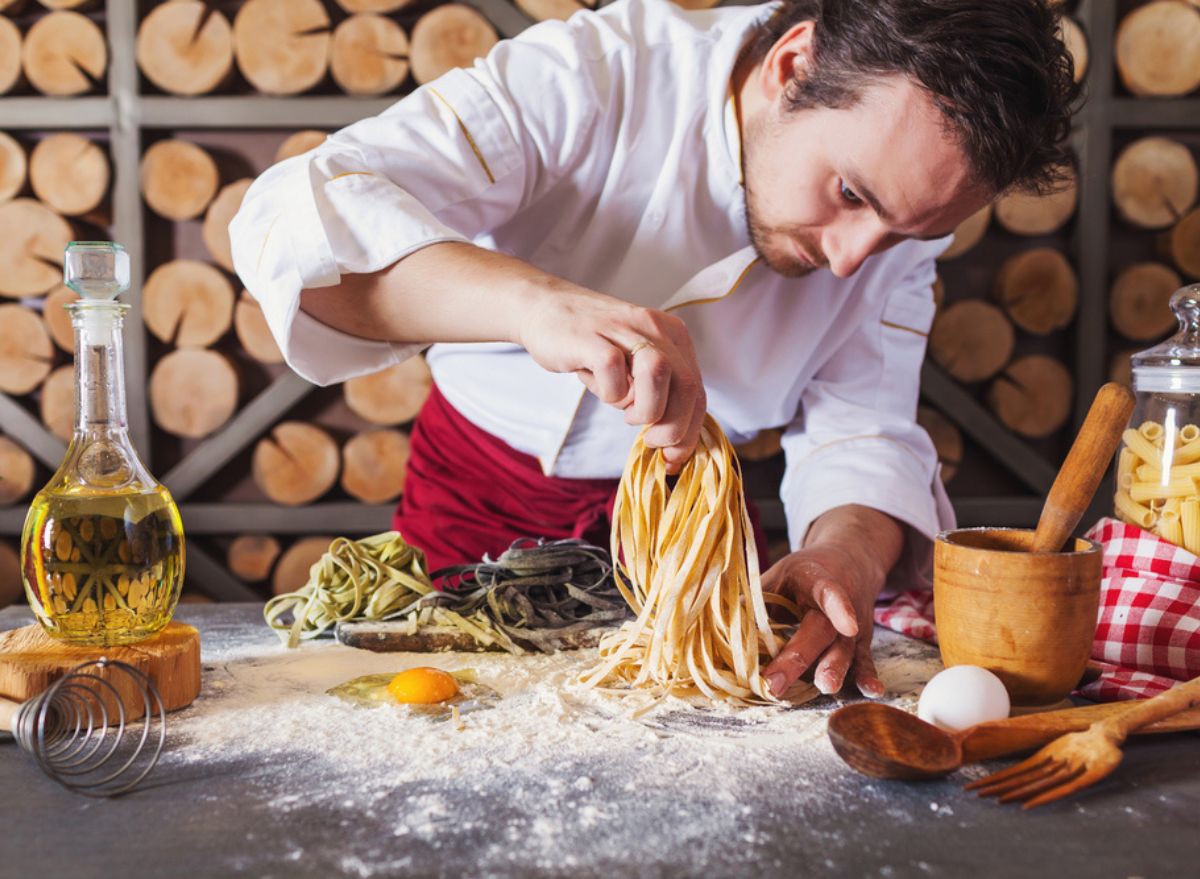
If you've ever dined on a delicious bowl of pasta at an Italian restaurant and thought I could never make this, well, think again. Many Italian chefs turn to the same set of secrets when cooking their meals—and they are easy to replicate at home.
"Great Italian food is all about simplicity, while still hitting all the details," says Chef Scott Harris, restaurateur and CEO of Scott Harris Hospitality Group.
From when to add your fresh herbs to cooking the pasta just right, here's exactly what to do to make your cooking game top-notch right at home—even when your meal is simply a box of pasta and a jar of sauce.
Or one of these 53+ Healthy Italian Recipes!
Use fresh herbs.
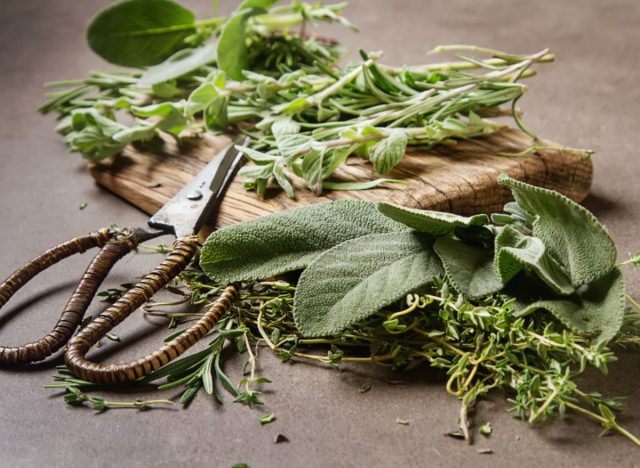
"I grew up in my family's Italian American restaurant in the Midwest," says Chef Anthony Spino with food tech platform HUNGRY. "A lot of our dishes are cooked with parsley, basil, and oregano. As a kid, I would eat fresh mint from my grandfather's garden. As I grew older, I learned how healthy fresh herbs were and I started to use them in at least one meal a day."
"The herbs and spices that I use can help create distinct ethnic flavors in my food," says Chef Anthony. "The jackfruit recipe that we are featuring uses basil which I incorporate with Italian dishes, but by replacing the basil with cilantro and adding a few other spices such as chili powder and cumin then the jackfruit becomes Mexican style shredded meat or sofritas."
Make one or two flavors the star of the show.
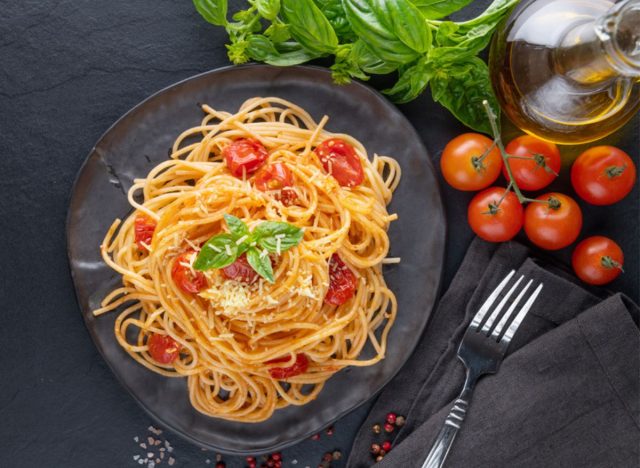
"Many people think to succeed in Italian cooking, you must use several different flavors and ingredients when creating a dish," says Chef Tony Mantuano, Food & Beverage Partner at The Joseph, a Luxury Collection Hotel in Nashville. "I have found much more success however with taking one or two ingredients or flavors and really making them the star or focal point of the dish. It's important to be confident in cooking the way Italians do, which means leaving some ingredients out."
Have the best ingredients on hand.
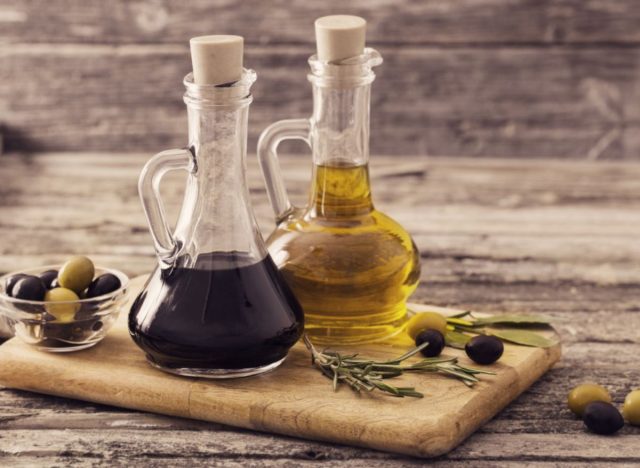
"I have personally found that it's vital to have certain ingredients on hand when cooking in this genre, items such as olive oil, balsamic vinegar, and the unique Arborio rice that is used to create our favorite risotto dishes," says Chef Tony.
Don't overdo it on the garlic.
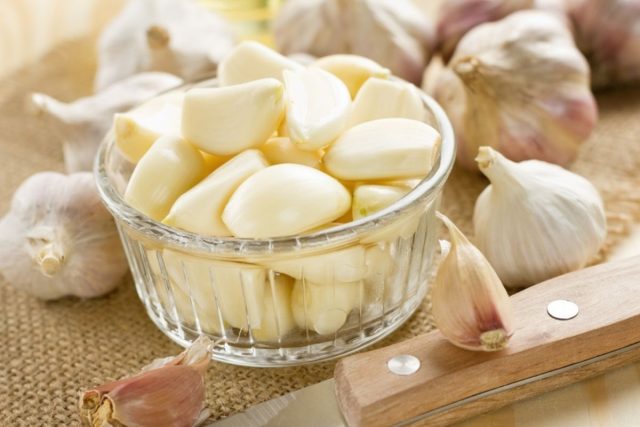
"A common misconception is that when cooking Italian, you must use a ton of garlic," says Chef Tony. "You will actually find little to no garlic being used in dishes at home nor at Yolan. With Italian cooking, flavor profiles can be more subtle and don't always need to overpower a dish."
Use a proper-sized pan.

"When cooking pasta for a large family or a big group, make sure you have a big enough pan," says Rossella Rago, Italian-American cookbook author of Cooking with Nonna: Sunday Dinners with La Famiglia which will be released in October. "For one pound of pasta or more I always reach for my big 14-inch skillet so I know there's enough room for all the pasta to marry the sauce without any spillage (or headaches)."
Take the pasta out right before it's finished cooking.
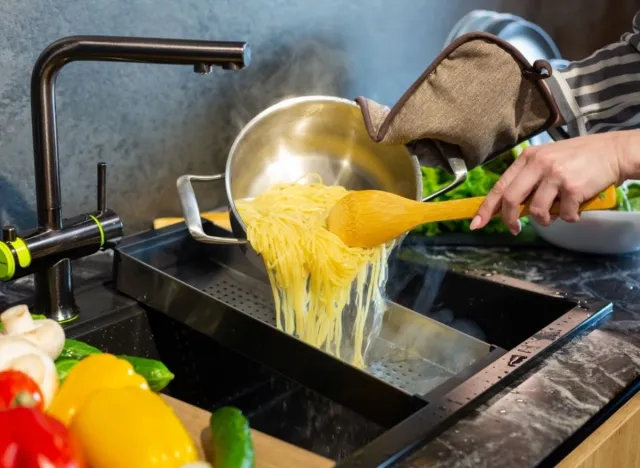
Eating overcooked, mushy pasta doesn't make for a pleasant eating experience, and it can easily be avoided by paying closer attention to the timing of your pasta.
"Filled and short pasta tends to float when nearly done cooking," says Executive Chef Chad Huff of Marisi in La Jolla. "Take the pasta out of the water about 90% before done cooking and finish cooking in the sauce."
"[It will] properly marry the sauce to the pasta and meld all your flavors together," says Rago. "This will also ensure that your pasta is Al dente every single time."
Add the seasonings with the oil/butter in the beginning.
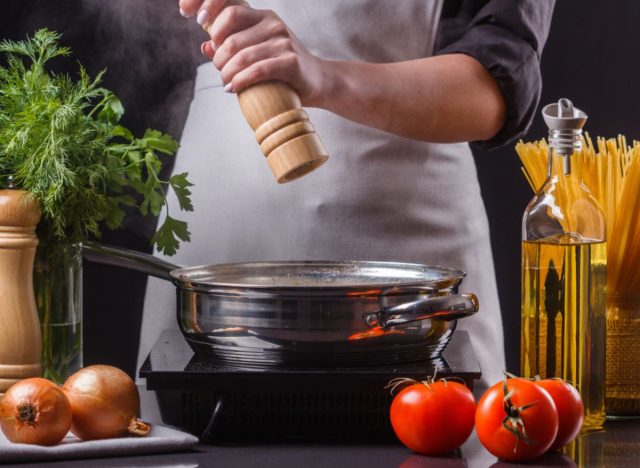
Even though many recipes say to add seasonings and fresh herbs at the tail end of your cooking, Chef Salvatore Gisellu of Urban Family Concepts recommends doing a complete 180.
"When I make sauce or soups, I always put the seasonings and fresh herbs at the start with my oil or butter to achieve a superior product," says Chef Salvatore. "I believe this creates a better Umami."
Save the pasta water.
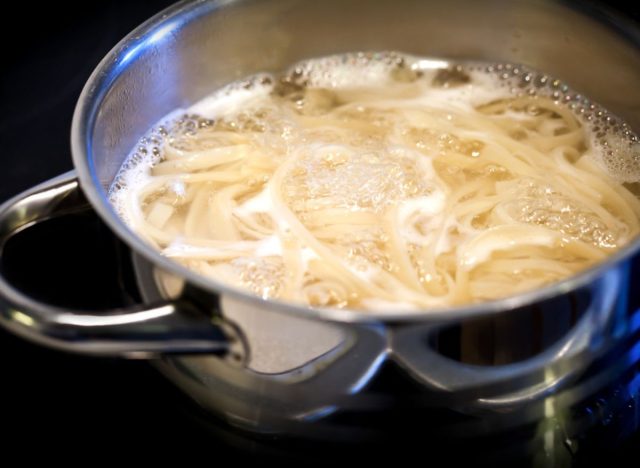
Speaking of water, Chef Scott is a big believer in using it for enriching the texture of your pasta sauce.
"Pasta water contains all the necessary starch to make your pasta sauce silky and smooth," he says. Add a small amount to your sauce and stir it in to thicken.
Don't trash the asparagus ends. Make a stock!
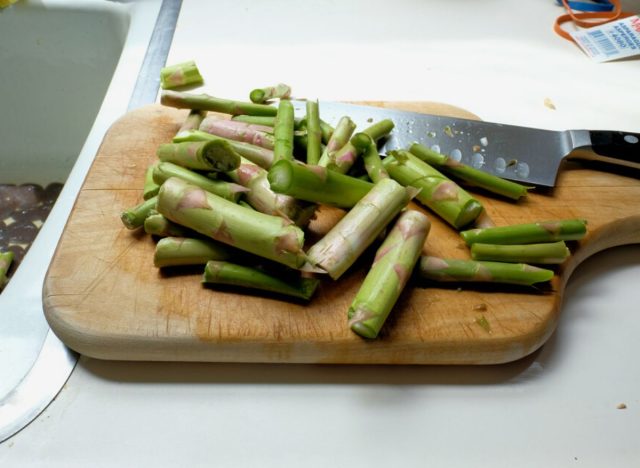
"As part of a no-waste food movement, we love to get creative and make use of all parts of our vegetables in a versatile risotto dish," says Chef Francesco Bonsinetto, CEO of Farm to Fork Experiences at Cucina Migrante. "Instead of store-bought stock, we make a vegetable stock by heating water to a rolling boil, adding salt and the ends of asparagus, using the parts that would normally get thrown away. Once the risotto is almost finished cooking, gather all the asparagus ends from the stock and blend them with turmeric, olive oil, and a splash of the stock to create a rich, no-cheese-necessary vegan 'cream,' to add atop the risotto to finish the dish."
Get cooking with these 34 Easy and Delicious Tomato-Based Recipes!
Go for the best quality tomatoes.
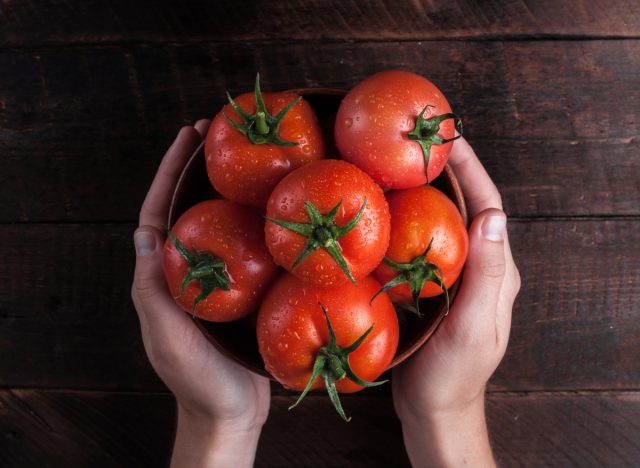
"[Look for] great quality canned or fresh tomatoes," says Chef Scott. "[They work] great as the star of Italian food, but can also play a supporting role."









